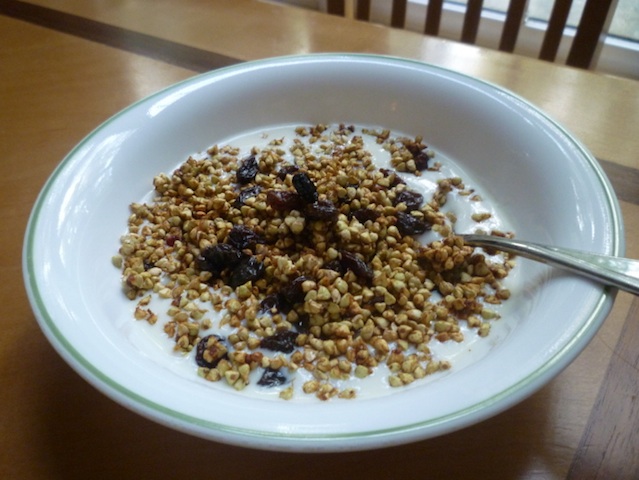
Sprouted Buckwheat Granola is a wonderful breakfast with raisins? and raw milk or yoghurt. It can be eaten as trail mix.
GUEST POST by Celeste Skousen
This recipe is NOT safe for someone on the Specific Carbohydrate Diet.
Walking through the aisles of a local health food store not long ago, I spotted a simple, gluten-free granola mix selling for a typically high price. It was a raw, sprouted buckwheat granola, with only four ingredients: sprouted buckwheat, dates, raisins, and flax seeds. I bought a package, biting the cost bullet once, with the intent of figuring out how to make it myself. Turns out it’s surprisingly easy.
4 cups raw organic buckwheat
2 cups organic dates, pitted
filtered water
organic raisins (optional)
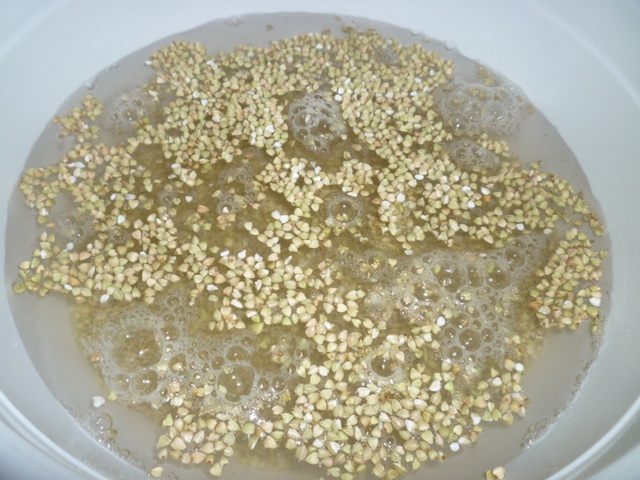
Pour buckwheat into a large bowl and cover with plenty of water. Allow to soak overnight. The next day, rinse and strain several times until water runs clear.
To start out, all you need is raw buckwheat and water for soaking. Make sure the buckwheat has not been roasted because it will not sprout. Pour the buckwheat into a big bowl and cover with plenty of water. Let the buckwheat sit overnight to soak, anywhere from 8-24 hours is fine.
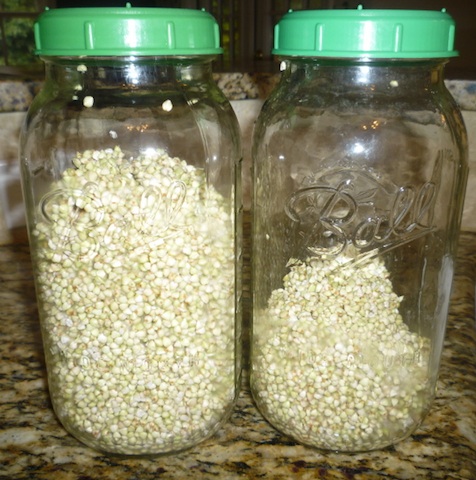
Transfer soaked and rinsed buckwheat to jars for sprouting. Allow 24 hours for the buckwheat to sprout. Rinse two or three times during sprouting.
When you’re ready, drain the buckwheat. Now, here’s an interesting note about buckwheat. When submerged in water, the seeds release some sort of starch that causes the water to become thick and very viscous. You can feel it when you swish your hand in the water. It’s important to rinse this starchiness away really well. If you have a large mesh strainer, you can dump the buckwheat into that and rinse with your faucet sprayer. Or you can do what I do: drain, dump the buckwheat back in the bowl, refill with water, swish around, drain again. Repeat three or four times until the water runs clear.
I’ve read websites that caution against soaking buckwheat for too long before sprouting, claiming the buckwheat will never sprout. Mine sprouted just fine. I think the rinsing has something to do with it. I prefer to allow the buckwheat to soak for a good long time, hopefully to help minimize anti-nutrients. I do think the rinsing process also helps to minimize some of the strong taste that buckwheat typically has. My buckwheat ends up light in taste and very palatable.
So on to the sprouting. Dump the buckwheat into your sprouting container. I use half-gallon mason jars with plastic sprouting lids on top. You can get these lids sometimes in the canning section of a grocery store, or order online. Alternatively, you can do the panty hose held in place by a metal ring trick. You just need a way for the jar to drain. Set the jars upside down at an angle, in a large bowl.
It usually takes about a day for the sprouts to emerge. It’s best if you rinse the buckwheat two or three times during that time. Again, you’ll want to dump them out into a big bowl, fill with water, swish and drain, and perhaps repeat once or twice. Don’t try rinsing them by simply filling the jar with water and draining. I’ve tried that; it doesn’t work well. The buckwheat still makes the water too viscous to drain properly.

Spread on dehydrator sheet or cookie sheet; dehydrate until fully dry and crisp. Here's a picture of how mine look spread out on the dehydrator sheet.
You can dehydrate them in an oven at the lowest possible heat, perhaps with the door cocked open if it’s 170F or higher, or in a dehydrator. I set mine at around 135F, and leave them for about 12 hours. They should be light and a bit crispy when they’re done.
Making the date paste is very easy. Pitt and clean the dates. Put the dates into a bowl and cover with water. Let them soak for at least 10 minutes; it makes them much easier to process. The last time I made this recipe, life happened and I didn’t get to process my dates right away. I stuck them in the fridge, where they ended up staying overnight. Wow, were they easy to process the next day! So that is an option ? you can perhaps start your dates soaking at the same time you start your buckwheat drying. It’s up to you.
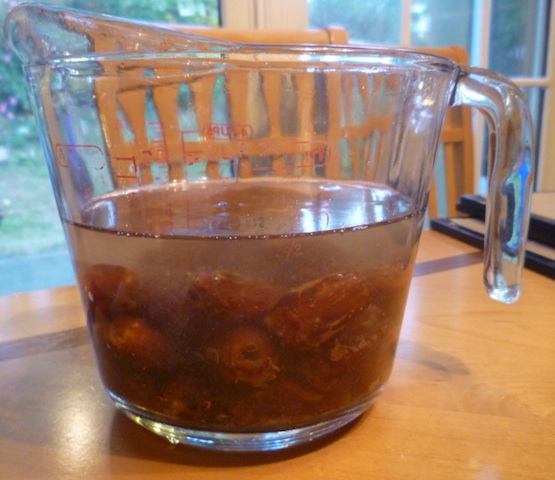
Soak dates in enough water to cover for at least 10 minutes. Transfer dates to food processor and process til smooth, adding small amounts of water to achieve desired consistency.
Remove the dates from the bowl, but reserve the soaking water. Put the dates in a food processor and add some of the soaking water. Process the dates until smooth. Slowly, add a bit of water to get a smooth consistency. You want it to be a bit on the thick side, but not too thick, so it stirs well into the buckwheat. If you end up a bit on the thin side, don’t worry; it’s just water, and will evaporate in the next step.
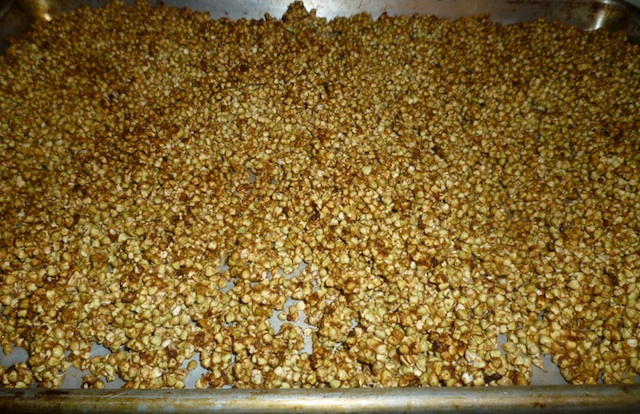
Spread on cookie sheet and bake at 325F for 20-30 minutes, stirring every 10 minutes, until lightly brown. Allow to cool, then store.
Finally, add your date paste to your buckwheat in a large bowl, and stir well to combine. Spread out on a cookie sheet and set in the oven at 325F. I set my timer in 10 minute increments, stirring each time. It generally takes about 30 minutes to get to the toastiness I like. Remove from the oven, stir once more to make sure it doesn’t stick to the cookie sheet too much, and allow to cool. Mix with raisins or other fun stuff if you’d like, before storing it. Keeps great on the shelf.
Serve with yogurt, fruit, raisins or eat as a trail mix. Enjoy!
Celeste Skousen is the Weston A Price Foundation Chapter leader for North Fulton County, Georgia, US.
